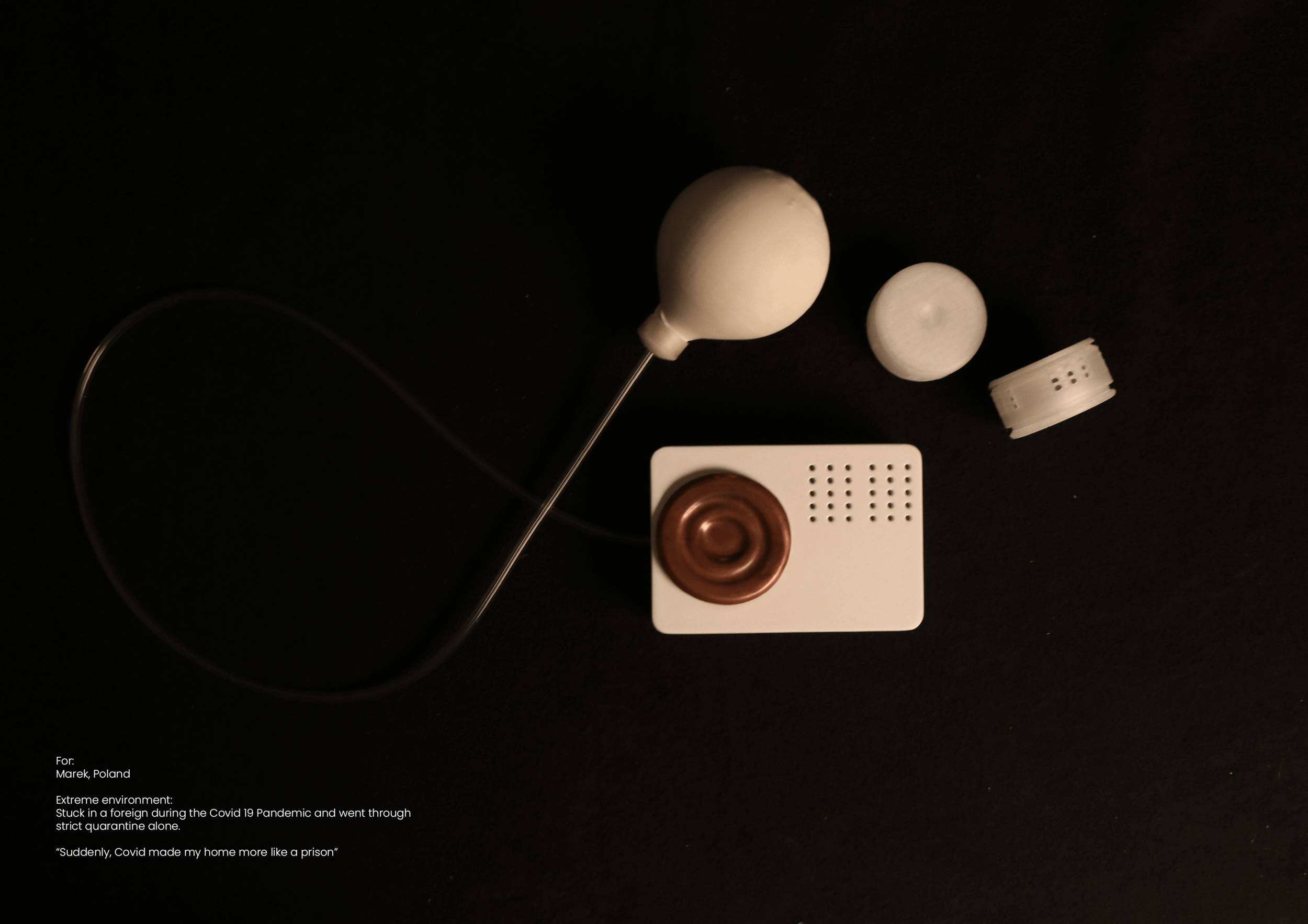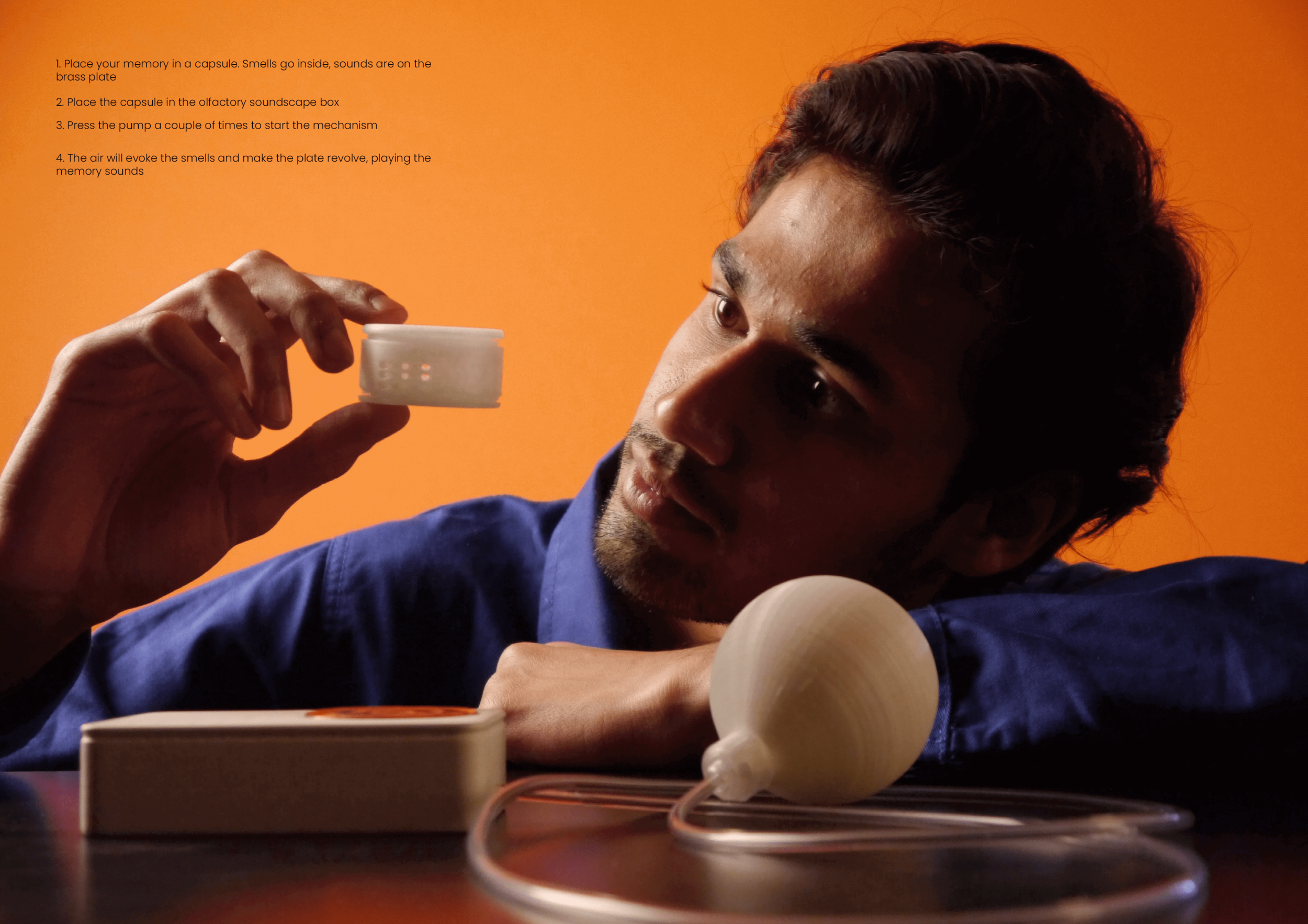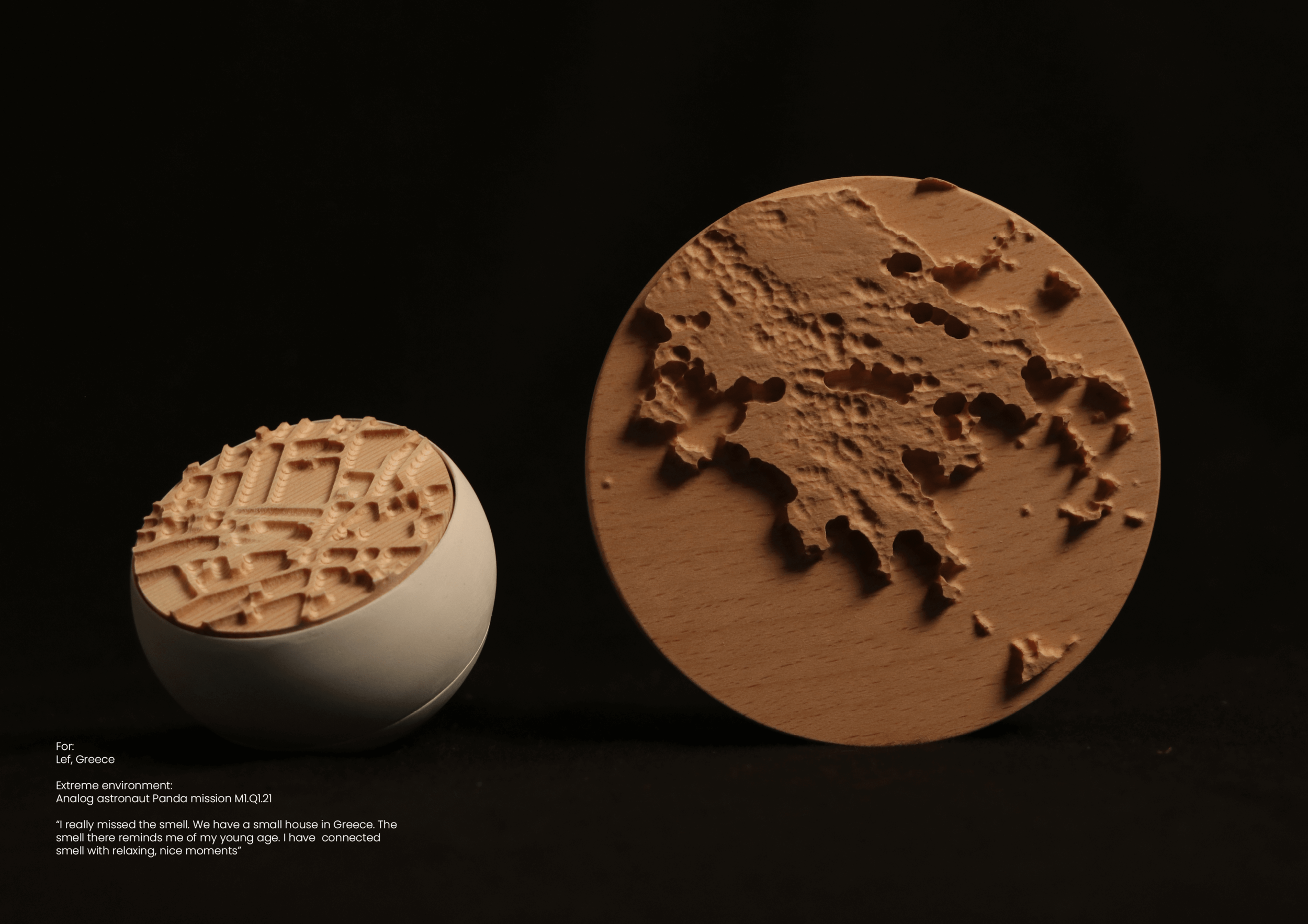
‘Space Sensescapes’ by Maria Anna Jedryszek
Master of Design (2019 - 2021)
Design School, Kolding, Denmark
Key supervisors: PhD Canan Akoglu & PhD Anne Corlin
keywords: Speculative design, Space exploration, Co creation, Synesthetic design, Home, senses, extreme environments, memory
People have been exploring Space for almost 60 years. We have learned that sending people into space is not limited just to survival, but their wellbeing is crucial for their efficiency, avoiding errors and crew conflicts, conducting experiments and maintaining good communication. Creating a good atmosphere to work and live in became an essential factor for short term and long term missions on the ISS, but also year long submarine missions and in research facilities on the Arctic.
As we prepare for a one way mission to Mars we search for the optimal solution for body resilience and perseverance, sustainable energy solutions, the best way to transport people and build habitats. But isn't it also important to make this habitat feel like Home?
As we study the wellbeing of people working and living in extreme environments on Earth, we can understand better what are the factors that make home Home. The feeling of home is important. The sense of familiarity, comfort and safety, the memories of the place we grew up and connect to home is closely linked to our sense of identity and wellbeing.
With the prospective colonization of Mars, how can we capture memories of Home? How can we evoke the feeling of Home in these extreme environments? What’s most important to bring on a one-way journey to Space, to remember Earth, to stay connected and to feel home?
This project explores my experience in an extreme environment, where I spent half a month in a lunar simulation habitat as an analog astronaut. In combination with an extensive study on senses, synesthetic design, sensory substitution and sensory addition, through new technologies; as well as by collecting multiple stories of the “sensory Home” of participants who lived in the extreme, the research explores how can we evoke the memory and feeling of Home through creating multisensory objects.
By collecting data and using a participatory design approach, I decided to create a speculative design piece in order to provoke curiosity, sparking up a discussion about Space exploration and creating future homes on the Red Planet or on the moon. In my paper I discuss how important the role of a designer could be in a group of scientists and how through speculating potential futures we can shape who we become.
Speculative Design subtlety nudges people into discussing the extreme, it becomes a catalyst bringing fiction into reality, creating utopias and dystopias. Through starting a debate about even far fetched future scenarios, we start a discussion about the Now. These speculations seemingly distant from reality, come to life, become palpable, create awareness of potential risks, open the imagination of alternative ways of being and can make a huge impact in human behaviour.
The final outcome is a series of speculative objects, created for each participant and by working closely with them. These tools are personalized memory capsules, which could evoke the feeling of Home and could be taken on a journey to Space. Each capsule carries a story, a sensory experience and a path leading to Home.
The technology imagined in the created objects may be still non-existent. From design impacting how people interact with products, what they do and how they do it, the discursive practice expands the role of design to influencing how people think. These designs are created by a variety of tools and new technologies to imitate how could we translate sounds into smells, smells into graphics or taste into a tactile experience. From 3D print and 3D scan, through translating spectrograms into digital print and knit, to using traditional craft tools and digitalizing them.
We often discard the smallest elements, but it’s the details that make the biggest difference. Sometimes the smallest, unnoticed aspect can make the most powerful impact. The environment in Space is so complex, aspects such as food experience, crew interaction, or the smell seem to be trivial, yet as we can see, those details matter greatly.
There's a strong link between the feeling of Home, smells, sounds, taste, tactility, sight and wellbeing. There is a visible positive effect of multisensory experience. Regardless of the location, senses can make us travel back in time into the secure embrace of warmth, they can take us to the beach or on a walk in the forest, somewhere safe, comfortable, familiar.
Wellbeing can lay in details- sometimes it’s a simple shared meal, the sound of raindrops or smelling a batch of freshly baked cookies that brings us Home.
Maria Anna Jedryszek / MDes / Kolding / 2019-21
Social designer, industrial designer, production designer, analog astronaut, graduate of Design School Kolding. Currently working with innovation design, industry 4.0 and design for social sustainability. As a production designer she has worked with students from the National Film School in Lodz, as well as created sets and designed costumes for festival traveling short films, and music videos for artists from Poland, Ireland and Denmark. Her designs were nominated and awarded in competitions and her work has been exhibited in Warsaw, Lodz, Dublin, New York, Copenhagen, Herning and Kolding.







